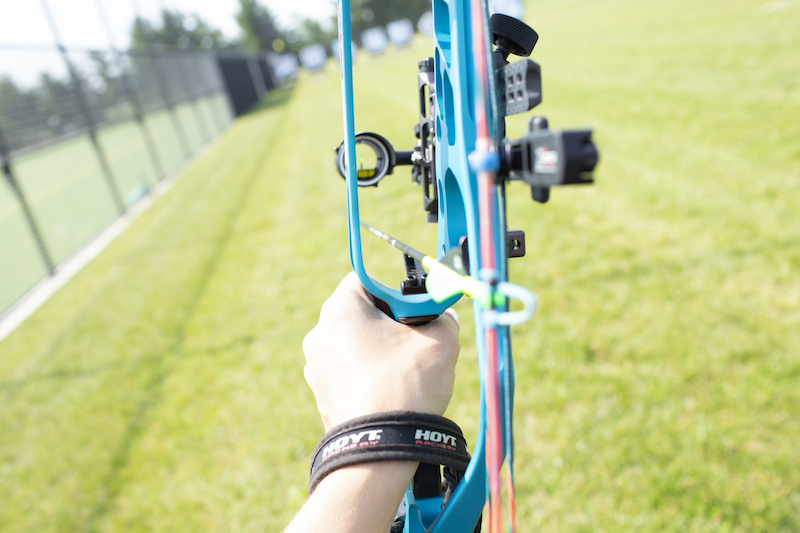Is something off with my archery setup? Most archers ask that question if their arrows aren’t grouping tightly. To get the most from their compound bow, archers must know how their sights, arrows and arrow rest affect their shots.
They also must ensure their setup includes the right stabilizer, because a well-balanced bow quickly improves performance. Stabilizers must balance the bow to increase its inertia and reduce vibrations upon each release, which helps archers hold steadier on the target.
Choosing a stabilizer isn’t as easy as copying a pro’s setup. Stabilizers come in many lengths and weights. You must find the one that’s best for your bow and shooting preferences.
“Stabilization allows you to have a more consistent fall-away with your bow,” said William Bowman, a manager, technician and string-builder at the Archery School of the Rockies.

Bowman recommends taking your bow into the shop when looking for a new stabilizer. He also encourages archers to ask a coach or instructor to look at their shooting form.
“The first thing to look at is an archer’s alignment,” Bowman said. “If you don’t have good form, you should only be running a front stabilizer.”
If the archer’s form is fine, check the bow’s balance. Most compounds go off-center once you attach their sights and arrow rest. The top of the bow is also heavier than the bottom.
“You can’t hold the bow in the middle and shoot in the middle,” Bowman said. “You hold the bow right under the arrow, and that causes balance issues.”
With extra weight on one side of the bow and nothing to counter it, the bow won’t balance at full draw. That’s why most tournament archers use front and rear stabilizers.

The easiest way to check your bow’s balance is to look at the bubble in the sight’s level. Pull your bow to full draw, close your eyes, and then open them and look at the bubble. If it’s level, your bow is balanced. If the bubble drifts anywhere besides center, you must make adjustments.
“The ultimate goal is not to fight with the bubble level at full draw,” Bowman said. “If you’re not twisting your arm, shoulder or bow hand, and the bubble comes straight to the middle, that’s what you want. You’re not manipulating your form to get your bow level.”
The stabilizer should steady your aim and make your shots smoother. Each archer is different, however, which means each requires a customized stabilizer.
“With compound bows, you want a dead bow,” Bowman said. “You don’t want a big swing. You want it to shoot and drop flat.”
It’s simple to add the right amount of weight. More weight, however, doesn’t always mean steadier shots. Too much weight can cause fatigue and possibly injury. If you want to shoot a heavier stabilizer, you must work up to it.
Bowman said it’s common to see 30-inch front stabilizers in competition setups. Rear stabilizers are usually half the length of the front stabilizer, so a 15-inch rear stabilizer would be common in that setup. And if the front stabilizer has a 1-ounce weight, the rear stabilizer would likely have a 2-ounce weight.
Those are good starting points, but they’re just suggestions. The best way to find your perfect setup is to experiment with different lengths and weights at an archery shop. Learn what feels right before you buy it.




